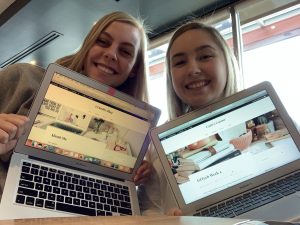Hey Cloggers and Carly’s Crew!
Sadly, this will be our final blog post for the semester! This post will be a conclusion of our findings and we also want to share our personal opinions with you. We have attached our presentation that we will be sharing with our class! Here are our 3 biggest take-aways from our research and exploration:
1: There is no black and white answer.
We discovered that there is not one answer when it comes to effective use of screen time in classrooms. Each classroom is filled with different needs that a teacher needs to cater to and technology speaks to that. One year a teacher might use no technology at all but the next year they might use technology every day. The truth is that it is all about moderation and as long as we support students and their families by being upfront and honest about the purpose of technology we will have success.
2: Technology is not meant to replace face to face interactions.
Well look at us today! Video-calling on Zoom due to the Coronavirus pandemic. Thankfully technology is getting us through this hard time. With that being said, we need to note that technology is not meant to replace the interactions between students in classrooms. Instead it is used to enhance their knowledge and their educational network. If a student is researching a medical topic, what better way to get their information than from someone who actually works in a hospital every day? An online interview with a doctor would be an amazing experience for the student. We do need to ensure students are balancing their time between technology and real-life interactions but this can be a topic for discussion in older classrooms. Even us adults haven’t figured out the golden answer!
3: Technology is always evolving
Last but not least, technology is ever evolving. Teachers need to stay updated and educated with new programs and apps in order to best support their students. Sometimes the students might know more about the teacher and this would be a great opportunity for the student to “teach the teacher”. We as educators need to be okay with the fact that we don’t know everything and acknowledge our mistakes when they are made. Let’s just say when technology is involved, something is bound to go wrong! Problem solving and troubleshooting is inevitable in a technology class, but this is also a great opportunity to teach the students about helpful strategies for these situations.
In terms of our experience with the whole partner inquiry process we both had a lot of fun! Although the research section is important, we both felt that we absorbed the most from our conversations that we had in person! We both agree that working with a partner was extremely beneficial in supporting our learning.
That is all we have for you!
Clogging off forever,
Carly and COordt 🙂


